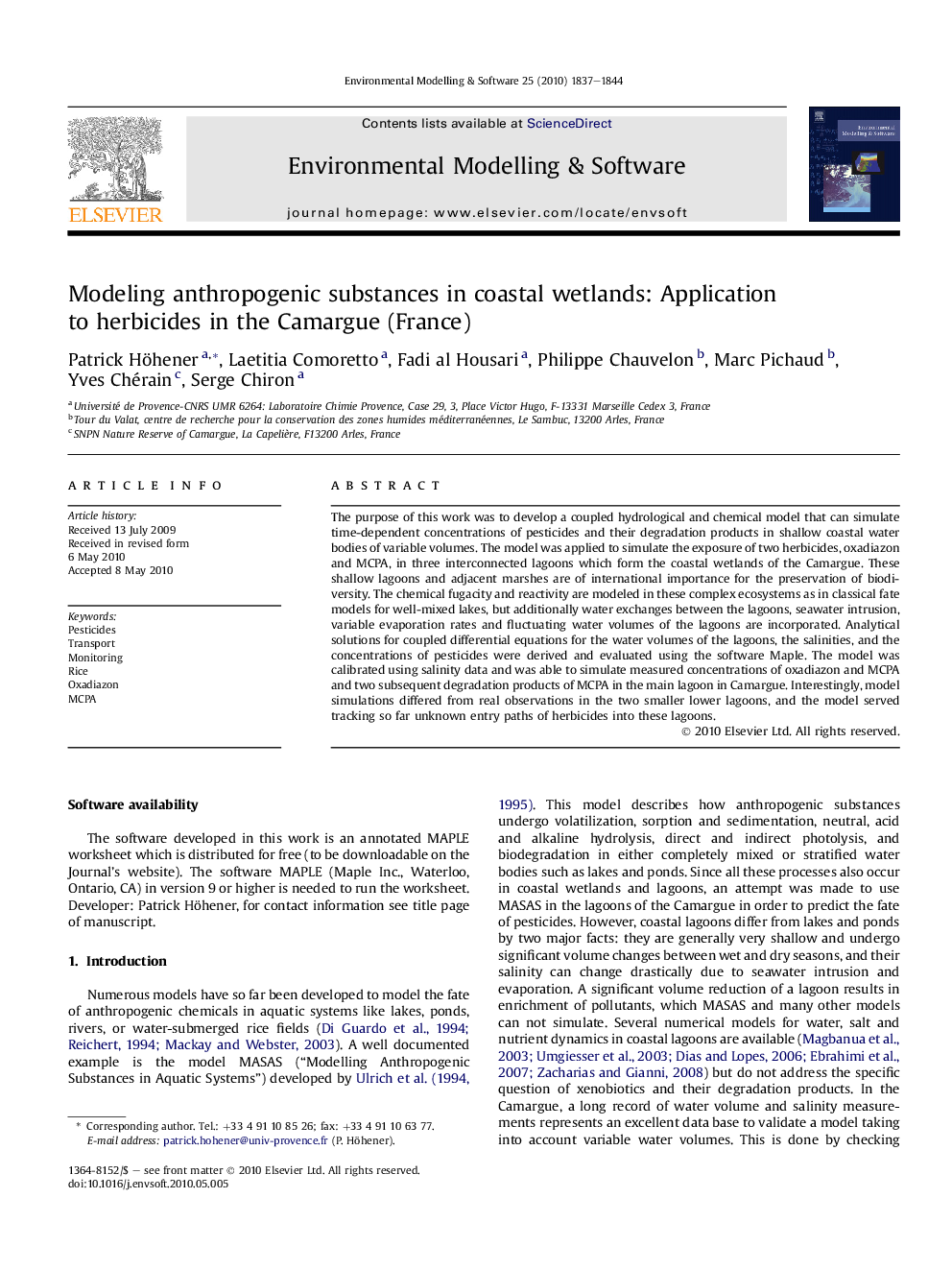| Article ID | Journal | Published Year | Pages | File Type |
|---|---|---|---|---|
| 569838 | Environmental Modelling & Software | 2010 | 8 Pages |
The purpose of this work was to develop a coupled hydrological and chemical model that can simulate time-dependent concentrations of pesticides and their degradation products in shallow coastal water bodies of variable volumes. The model was applied to simulate the exposure of two herbicides, oxadiazon and MCPA, in three interconnected lagoons which form the coastal wetlands of the Camargue. These shallow lagoons and adjacent marshes are of international importance for the preservation of biodiversity. The chemical fugacity and reactivity are modeled in these complex ecosystems as in classical fate models for well-mixed lakes, but additionally water exchanges between the lagoons, seawater intrusion, variable evaporation rates and fluctuating water volumes of the lagoons are incorporated. Analytical solutions for coupled differential equations for the water volumes of the lagoons, the salinities, and the concentrations of pesticides were derived and evaluated using the software Maple. The model was calibrated using salinity data and was able to simulate measured concentrations of oxadiazon and MCPA and two subsequent degradation products of MCPA in the main lagoon in Camargue. Interestingly, model simulations differed from real observations in the two smaller lower lagoons, and the model served tracking so far unknown entry paths of herbicides into these lagoons.
